Do passive radiators offer better tradeoffs for small speakers, or it’s all about execution?This would sacrifice bass extension, so I think it was weighted pros and cons.
-
WANTED: Happy members who like to discuss audio and other topics related to our interest. Desire to learn and share knowledge of science required. There are many reviews of audio hardware and expert members to help answer your questions. Click here to have your audio equipment measured for free!
You are using an out of date browser. It may not display this or other websites correctly.
You should upgrade or use an alternative browser.
You should upgrade or use an alternative browser.
Kanto YU6 Measurements (Powered Monitor)
- Thread starter amirm
- Start date
- Thread Starter
- #42
I tested for hiss. You can only hear it up to 4 to 5 inches from the tweeter and that is it. It is one of the quietest powered monitors out there. Use of passive crossover helps it in this regard. So definitely a non-issue.
I also found interesting to see that both the 1kHz and 2kHz resonances “shift” to slightly lower and higher frequencies on the CSD plot. Though I have no idea what it meansI find the 2kHz resonance interesting. It is not showing up in the DI curves or the frequency response (at most it adds a 1 dB ripple), but it is clearly seen in the waterfall plot and the port/cabinet response.
Is this resonance audible and, if so, wouldn't it point to putting more weight into evaluating waterfall plots?
Last edited:
Their flagship Tuk model seems to advertise more towards desk use, so not sure how deep that bass goes or how loud it gets by comparison.
They advertise the TUK and YU6 as "Frequency Response: 50 Hz – 20 kHz" with no further details.
In-room for the TUK with boundary reinforcement, I get pretty strong bass in the ~40-50hz range with some audibility below that. Sorry for the vagueness, haven't measured them in open air yet, always do that last.
Haven't heard the YU6 to directly compare them. Different 5.25" woofer, more powerful amp, and DSP assist in the TUK so I'd be surprised if they *didn't* have somewhat more bass output/extension but that's only a guess. I've interacted with @KantoLiving on Reddit for a few years and he's a straight shooter so I'd trust his insight if he chimes in.
Any audible hiss is a deal-breaker for close monitoring. Which measurement should I be looking at to see hiss level (and if none, shouldn’t there be one for this speaker category)?I tested for hiss. You can only hear it up to 4 to 5 inches from the tweeter …
tuga
Major Contributor
I mean, who knows. there seems to be sealing issues and other sources of resonance.
I know Kanto isn't Genelec and only Kanto can say if they took structure born vibration of drivers and enclosure into account. If they did and if they tested for it then they could say so.
Acoustic sound coming out, mechanical vibrations, etc.
One would have to dampen and seal things then remeasure to see what the issue is.
Would more acoustic stuffing against the tweeter area stop some of the resonance? maybe, but it's not really worth my time to figure out.
These speakers are going in the garage where they will be great with the Bluetooth and power they have.
ON a side note Adam audio monitors have MUCH worse resonance I believe and they are sill used and loved.

Adam A5X Review (Powered Studio Monitor)
This is a review and detailed measurements of the Adam A5X powered speaker. It was kindly sent to me by a member for review and costs US $499 each. Despite its small size, the A5X is quite heavy: The back of it got warm so I am assuming it uses class AB amplification or at least a linear...www.audiosciencereview.com
View attachment 159438
View attachment 159439
Reading through this topic it looks like they're cabinet resonances, not port ones:
https://audiosciencereview.com/foru...ces-of-mains-in-a-2-1-setup.19039/post-624224
Nathan Raymond
Active Member
- Joined
- Feb 5, 2018
- Messages
- 212
- Likes
- 211
If you like to go for the whole "matching" thing, Kanto makes two subs, a 6" one and an 8":It would be hilariously awesome to have these hooked up to an SVS 3000 Micro Subwoofer or something.
https://www.kantoaudio.com/subwoofers/sub6/
https://www.kantoaudio.com/subwoofers/sub8/
eardiggler
Member
- Joined
- Mar 5, 2021
- Messages
- 61
- Likes
- 43
Great review! Was the phono preamp tested? In any case I really like the versatility of these.
- Thread Starter
- #49
I don't have a good protocol for measuring it. Near field measurements are subject to distance accuracy from driver. Mid field testing suffers from variable ambient noise.Any audible hiss is a deal-breaker for close monitoring. Which measurement should I be looking at to see hiss level (and if none, shouldn’t there be one for this speaker category)?
But I hear you. Let me think about how to get something going.
Makes me think of guitar isolation cabs. In terms of measuring hiss, maybe have something like a long box (for mid field) made out of thick plywood and line the inside with broadband absorption? I would think that would help drastically with ambient noise? (At least not nearly as involved as having to building a room within a room and etc... lol)I don't have a good protocol for measuring it. Near field measurements are subject to distance accuracy from driver. Mid field testing suffers from variable ambient noise.
But I hear you. Let me think about how to get something going.
Last edited:
Also at what volume/gain level do you test his.
I guess it makes sense to do it at 86db? and maybe also at 96db level.
Depending on what programs you have to measure I assume you could do this:
1. Send out pink noise to get 86db and also later 96db
2. Turn speaker off then use a program to capture the noise floor at whatever distance to speaker.
3. Turn speaker on and capture hiss at whatever distances for 86db and later for 96db.
This methodology should remove ambient noise and leave just hiss.
I guess it makes sense to do it at 86db? and maybe also at 96db level.
Depending on what programs you have to measure I assume you could do this:
1. Send out pink noise to get 86db and also later 96db
2. Turn speaker off then use a program to capture the noise floor at whatever distance to speaker.
3. Turn speaker on and capture hiss at whatever distances for 86db and later for 96db.
This methodology should remove ambient noise and leave just hiss.
- Thread Starter
- #52
This assumes ambient noise is constant which is not the case....2. Turn speaker off then use a program to capture the noise floor at whatever distance to speaker
Maybe a version of the "2 mic technique"
 www.soundonsound.com
www.soundonsound.com
Probably wouldn't work, just brainstorming so Amir doesn't need to build and store a huge isobox. Unless of course it doubled as a minifridge with drinks and a chocolate dispenser.
Q. Why do I sometimes see singers using two microphones on stage?
I've noticed that, when I watch old concert footage, the singer is often using two mics. I'd always assumed that one was being...
Probably wouldn't work, just brainstorming so Amir doesn't need to build and store a huge isobox. Unless of course it doubled as a minifridge with drinks and a chocolate dispenser.
Maiky76
Senior Member
This is a review and detailed measurements of the Kanto YU6 powered speaker. It was kindly sent to me by a member and costs US $499 on Amazon including Prime shipping.
The YU6 comes in different finishes, all of which look pretty attractive. The sample I have is black:
View attachment 159317
As you see, you have a front volume control which is great for a desktop monitor. A remote control is also provided which is even more convenient to use as it also lets you select many other options including different inputs:
View attachment 159318
I don't think I had seen a powered monitor with phono input before! Very nicely done as far as inputs and feature set.
Measurements that you are about to see were performed using the Klippel Near-field Scanner (NFS). This is a robotic measurement system that analyzes the speaker all around and is able (using advanced mathematics and dual scan) to subtract room reflections (so where I measure it doesn't matter). It also measures the speaker at close distance ("near-field") which sharply reduces the impact of room noise. Both of these factors enable testing in ordinary rooms yet results that can be more accurate than an anechoic chamber. In a nutshell, the measurements show the actual sound coming out of the speaker independent of the room.
I performed over 1000 measurement which resulted in error rate of roughly 1%.
Reference axis for measurements was the center of the tweeter. Grill was not used in either measurements or listening tests.
Measurements are compliant with latest speaker research into what can predict the speaker preference and is standardized in CEA/CTA-2034 ANSI specifications. Likewise listening tests are performed per research that shows mono listening is much more revealing of differences between speakers than stereo or multichannel.
Kanto YU6 Measurements
Acoustic measurements can be grouped in a way that can be perceptually analyzed to determine how good a speaker is and how it can be used in a room. This so called spinorama shows us just about everything we need to know about the speaker with respect to tonality and some flaws:
View attachment 159319
Response above 1 kHz is pretty good. Below that we have a peak that is most likely a resonance and a wide dip. Looking at the near-field measurements of the drivers we instantly see the reason for that peak:
View attachment 159320
We see the same indications in the CSD/waterfall display:
View attachment 159321
Due to decent directivity off-axis response looks similar to on axis:
View attachment 159322
Combined, we can predict the far-field response of the speaker in a room:
View attachment 159323
Same story as the on-axis response.
Horizontal beam width is decent but narrows at higher frequencies so you would want to point the speaker at your ear:
View attachment 159324
Or not if the highs bother you too much.
Same measurement in contour style shows decent results:
View attachment 159325
Vertically story is typical of 2-way speakers. Stay close to the tweeter axis (tilt the speaker up if you have to):
View attachment 159326
Distortion story is very good at 86 dBSPL and even at 96 if you ignore the very low frequencies:
View attachment 159327
View attachment 159328
Kanto YU6 Listening Tests
First impression was reasonable with the highs stand out a bit. So I brought out the EQ and went after both the resonance and bass dip:
View attachment 159329
Compensating for low frequency shortfalls with EQ based on anechoic measurements is tricky as the room interferes. Here, the deficiency was enough that I managed to make some correction but any more adherence to the measurements didn't translate as well across different types of music. So at the end, I stayed with the above simple one filter. Once there, music was more balanced and bass that now could be heard properly.
I was extremely impressed with the dynamic ability of this speaker. You could crank it up with seemingly no limit! Vast majority of powered speakers are underamplified. Not the YU6. I could detect no limiting kicking and the sound would get as loud as I possibly wanted it in near-field listening. There was plenty of bass to boot. I have learned to detest amplifier limit in powered speakers more than frequency response errors. I can fix the response with EQ. I can't do anything about the amplifier running out of the juice and creating all kinds of noises.
Conclusions
The YU6 has two simple issues that are easily fixed using EQ. Once there, you have a powerful little speaker that plays well with incredible functionality. On the latter front, it goes way past what professional monitors provide with such niceties as remote control.
I am going to recommend the Kanto YU6.
------------
As always, questions, comments, recommendations, etc. are welcome.
Any donations are much appreciated using: https://www.audiosciencereview.com/forum/index.php?threads/how-to-support-audio-science-review.8150/
Hi,
Here is my take on the EQ.
These EQ are anechoic EQ to get the speaker right before room integration. If you able to implement these EQs you must add EQ at LF for room integration, that is usually not optional… see hints there: https://www.audiosciencereview.com/...helf-speaker-review.11144/page-26#post-800725
The raw data with corrected ER and PIR:
Score no EQ: 4.7
With Sub: 7.3
Spinorama with no EQ:
- Typical to this kind of speakers
- Not bad
- Port issue!
Directivity:
Better stay at tweeter height
Horizontally, better toe-in the speakers by 10/20deg and have the axis crossing in front of the listening location, might help dosing the upper range.
EQ design:
I have generated one EQ. The APO config file is attached.
- The EQs are designed in the context of regular stereo use i.e. domestic environment, no warranty is provided for a near field use in a studio environment.
- Once EQed, not too dissimilar to Genelec 8010
- I suggest playing with the second biquad for a flat ON regression with basically same score
Filter 2: ON PK Fc 124.47, -4.28, 0.96 change to
Filter 2: ON PK Fc 124.47, -2.50, 0.96
Score EQ Score: 5.8
with sub: 8.3
Code:
Kanto YU6 APO EQ Score 96000Hz
October192021-112842
Preamp: -1.6 dB
Filter 1: ON HPQ Fc 54.53, 0.00, 1.30
Filter 2: ON PK Fc 124.47, -4.28, 0.96
Filter 3: ON PK Fc 701.89, 1.10, 0.57
Filter 4: ON PK Fc 935.68, -4.89, 6.98
Filter 5: ON PK Fc 2380.43, -1.82, 0.82
Filter 6: ON PK Fc 4470.44, -0.85, 1.28
Filter 7: ON PK Fc 12746.97, 1.19, 0.26Spinorama EQ Score
Zoom PIR-LW-ON
Regression - Tonal
Radar no EQ vs EQ score
Nice improvements
The rest of the plots is attached.
Attachments
-
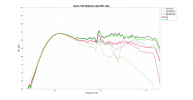 Kanto YU6 Reflexion data.png140.3 KB · Views: 77
Kanto YU6 Reflexion data.png140.3 KB · Views: 77 -
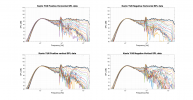 Kanto YU6 Raw Directivity data.png444.9 KB · Views: 61
Kanto YU6 Raw Directivity data.png444.9 KB · Views: 61 -
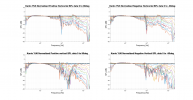 Kanto YU6 Normalized Directivity data.png320.1 KB · Views: 55
Kanto YU6 Normalized Directivity data.png320.1 KB · Views: 55 -
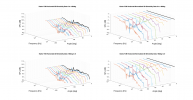 Kanto YU6 Horizontal 3D Directivity data.png408.7 KB · Views: 88
Kanto YU6 Horizontal 3D Directivity data.png408.7 KB · Views: 88 -
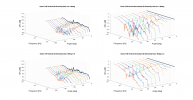 Kanto YU6 Vertical 3D Directivity data.png414.2 KB · Views: 100
Kanto YU6 Vertical 3D Directivity data.png414.2 KB · Views: 100 -
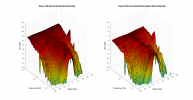 Kanto YU6 3D surface Horizontal Directivity Data.png446.1 KB · Views: 92
Kanto YU6 3D surface Horizontal Directivity Data.png446.1 KB · Views: 92 -
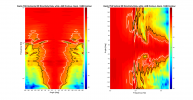 Kanto YU6 2D surface Directivity Contour Data.png275.9 KB · Views: 86
Kanto YU6 2D surface Directivity Contour Data.png275.9 KB · Views: 86 -
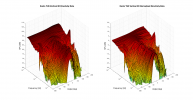 Kanto YU6 3D surface Vertical Directivity Data.png437 KB · Views: 70
Kanto YU6 3D surface Vertical Directivity Data.png437 KB · Views: 70 -
Kanto YU6 APO EQ Score 96000Hz.txt386 bytes · Views: 85
-
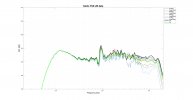 Kanto YU6 LW data.png135.4 KB · Views: 77
Kanto YU6 LW data.png135.4 KB · Views: 77
Walter
Addicted to Fun and Learning
- Joined
- Aug 25, 2020
- Messages
- 856
- Likes
- 1,242
I can picture it now. Amir's wife: Darling, why are there 3 kinds of beer in your [begin sarcastic tone] isolation box?just brainstorming so Amir doesn't need to build and store a huge isobox. Unless of course it doubled as a minifridge with drinks and a chocolate dispenser.
I am still using some Kanto iPair 5 I got years ago. They do have a small hiss, but the sound is great and I am happy Kanto built a reliable product. The old iPod port is now useless of course, but I revived them with an external DAC.We tried very hard to keep the hiss low compared to YU5 and previous speakers. Although I'm a Kanto rep, so feel free to be cautious, I can safely say we rarely if ever get complaints about hiss.
If it's cabinet issues probably not.Reading this review, I immediately thought of Erin's review of the Neumi. I wonder if stuffing the port would help.
I just got it back, thanks Amir, and I created a secondary rolling video/audio workstation. I will be using the YU6 there for editing work. Nice to know it should be good enough for that. Later they may end up in the garage.
I have the matching desktop stands being used on a standing desk set up and they are really nice.
spiritofjerry
Active Member
- Joined
- May 8, 2018
- Messages
- 146
- Likes
- 107
+1. Noise floor is a pertinent measurement for any amplifier, and as active speakers have one built in, it should be pertinent here, too.@amirm Does it hiss? If I may suggest this should be part of standard active monitor testing procedure as it can be a deal breaker for many customers.
If it's cabinet issues probably not.
I just got it back, thanks Amir, and I created a secondary rolling video/audio workstation. I will be using the YU6 there for editing work. Nice to know it should be good enough for that. Later they may end up in the garage.
I have the matching desktop stands being used on a standing desk set up and they are really nice.
Right, but we don't know if it is cabinet or port. It looks like it may be port. I notice Erin is testing for both now.
Similar threads
- Replies
- 1
- Views
- 449
- Replies
- 5
- Views
- 1K
- Replies
- 226
- Views
- 33K
- Replies
- 331
- Views
- 45K
